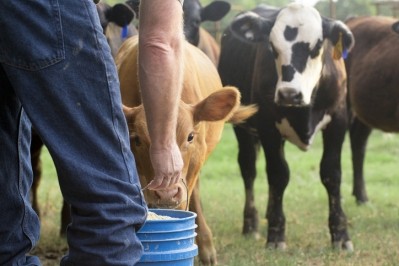Coalition asks FDA to boost livestock-focused antibiotic stewardship efforts

The group sent an appeal to the US Food and Drug Administration (FDA) last week.
In a letter, the 50-member coalition called on the FDA to quickly move forward with additional steps to address what it termed 'the serious public health threat' caused by the development and spread of resistance to antibiotics. The group urged the FDA to strengthen and implement its five-year action plan on antimicrobial stewardship in veterinary settings.
The coalition wants sales of medically important antibiotics for use in food-producing animals to be cut by at least 45% from 2009 levels by 2021. It wants all durations of use to be under 21 days for medically important antibiotics given to farmed animals. It said the FDA should update its list of medically important antimicrobials, provide guidance on product label information to strengthen stewardship and strengthen data collection on both antimicrobial use and resistance.
“We are mainly asking for FDA to move forward with the plan the agency announced last year,” said Steven Roach, food safety program director with the Food Animal Concerns Trust (FACT), a non-profit focused on livestock production and the potential public health problems arising from poor production practices.
An increased focus on medically important antibiotics is called for “because those are most directly linked to resistance, causing problems in humans. We are pushing for change because antibiotic resistance continues to spread causing difficult to treat infections in both humans and animals,” he told FeedNavigator.
Resistance to antibiotics continues to be a challenge, and, except for chicken production, US livestock producers tend to use more antibiotics per unit of meat production than other countries when data for comparison is available, he claimed.
“As illustrated by the US chicken industry and also by livestock producers in countries that use much lower levels of antibiotics to raise animals, lowering antibiotic use can be done without radically transforming agriculture,” Roach said. “It will require some changes including adjusting diets, improving sanitation and focusing on ways to prevent disease that do not rely on antibiotics.”
“The 41% drop in [antibiotic] sales between 2015 and 2017 without major problems in animal health and productivity or rises in consumer prices illustrate pretty clearly that there was a lot of unnecessary antibiotic use,” he added.
The coalition has yet to hear back from the FDA but does have a meeting scheduled with the agency for October.
"We will also share our recommendations with members of Congress when we meet with them,” he said of the coalition’s next steps.
Tracking antibiotic use in feed
A report released last month by the US Poultry and Egg Association tracked the use of antimicrobials in the feed and water of US broiler chickens and turkeys raised from 2013 to 2017.
Overall the use of antibiotics with chicks at the hatchery fell from 93% to 17%, while gentamicin use dropped 74%, for the companies taking part in the study. The use of virginiamycin in feed fell 60% and in-feed tetracycline use declined 95% and the in-feed use of tylosin ceased as provisions of the VFD started.
Turkey producers lowered use of antimicrobials at the hatchery and gentamicin use dropped 42%, as per the study. The addition of tetracycline to turkey feed declined 67% and the use of virginiamycin and tylosin in feed stopped.
Additionally, the total sales of antimicrobial products used in feed or with livestock declined in 2017 compared to previous years, according to information from the FDA. Total sales of medically important antimicrobials for use with food-producing animals fell 33% from 2016 to 2017.
The total amount sold in 2017 was about 10.93m kg – of which 51% of the products were medically important and 49% were not, the FDA reported. However, just because a product was sold does not mean it was used.
Room for improvement
The coalition pointed out, in the letter, than the Centres for Disease Control and Prevention (CDC) have been quite explicit in its ambitions in this area, in contrast to the FDA.
The coalition wants the list of antimicrobials that are considered medically important to be revised: “The FDA has not updated the list since it was published in 2003 as part of [Guidance for Industry] GFI#152. New science has emerged, resistance concerns have risen, and new drugs have been approved,” as per the letter.
They noted that a drug used in animals that FDA does not consider to be medically important is bacitracin, but that recent studies have shown that bacitracin use can select for resistance to the last resort drug colistin.
More work needs to be done to provide additional guidance regarding the specific meaning and use of terms like “treat,” “control” and prevent on product labels, group members said.
Currently, individuals decide when to use antibiotics in those situations and there remain some concerns about usage practices and marketing practices.
Additionally, data collection on drug use and resistance could be improved, the letter stated.
“Despite FDA’s recognition of the need for data on how antibiotics are used on farms for almost two decades, there has been very limited progress on filling this data gap,” they added.
“We ask that FDA put in place a program to sample feed distribution records kept as required by the Veterinary Feed Directive regulations as another source of data that would include information on both the amount of antibiotics administered in feed and reason for use. We also encourage FDA to strengthen the surveillance of antimicrobial resistance through the National Antimicrobial Resistance Monitoring System (NARMS) and to improve the speed of reporting.”
The most pressing recommendations relate to those setting reduction targets and ending the “routine use” of antibiotics for disease prevention, added Roach.
“In terms of feasibility, setting targets can be done quickly,” he said. “Updating the list of medically important drugs and providing guidance on product labels should not be a big challenge since they primarily require action by the agency not outside stakeholders.”















